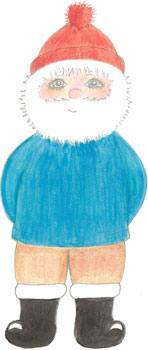
Salty Sam’s Fun Blog for Children
Number 314
Amazing Bees
Hello Everyone

So after Auntie Alice had decided to keep bees she knew that the first thing she had to do was read some books about bee keeping.
Books are a good source of knowledge.
You can read about things on the lnternet. The lnternet is interesting and informative, but books tend to go into topics you want to learn about in much more depth.
The books Auntie Alice wanted were going to be quite specialized and she didn’t think she would be able to find them all in a little book shop in Rocky Bay.
She didn’t want to borrow them from the library either because she wanted to make notes from them and keep hold of them for future reference in case she needed to refer to them for help.
So she ordered a handful of books online and it wasn’t long before they arrived.
She gave up knitting in the evenings for a while and settled herself down in a comfy armchair, with a notebook and pencil at her elbow, to start reading her books.
She was amazed!
She was amazed at how wonderful bees are.
She was amazed at how clever they are.
And she was amazed at how much there was to learn about bee-keeping!
Did you know that bees are just the most amazing insects with the most amazing social structures?
There is a huge diversity of bees in the world.
There are up to 25,000 known species and more have yet to be discovered.
The smallest bee is only 2mm big. That is the same size as a fruit fly. lt is found in the deserts in the southwest of the US where it pollinates tiny flowers. lt is what is called a solitary species which means it lives alone and does not live in a colony.
The female builds nest of sand where she lays her eggs. The young bees will be protected from the extreme heat of the desert inside the nest.
This tiny bee does not have a common name. lt is only known as Perdita Minima.
The largest bee, the giant bumblebee, on the other hand is 40mm long. This species of bumblebee is the only one that is native to the southern hemisphere.
lt was once found throughout Patagonia but has been pushed to the brink of extinction because its numbers have been decimated by the introduction of other bees to the area bringing with them diseases the bumblebee could not fight off.
Wallace’s Giant Bee, was thought to be extinct for quite a while until it was found again in lndonesia in the early spring of 2019. lt has a wing span of 60mm.
The honey bee – the kind of bee Auntie Alice wants to keep, lives in colonies of up to 60,000 – 80,000 individuals at the height of the summer when food if plentiful.
Honey bees have been kept for their honey for over 2,000 years in upturned baskets called skeps. The bees kept in mediaeval monasteries were the British Black Bee. They were striped but were darker than most bees you would see in your garden today; they are very suited to our climate and a lot of beekeepers are keen to bring them back into their hives.
The monks used the wax collected from their hives to make candles for their church or cathedral. These candles burned with a beautiful, pure-white light and smelled pleasant.
First, they would make a wick which was draped over a stick. The wick was dipped into warm wax and then held in the air until the wax solidified. The wax would dribble down the wick somewhat so that the candles became bigger at the bottom than the top.
ln this way two candles were made at a time.
The wick was dipped again and again so that a new coating of wax stuck to the one underneath each time. The layers were built up and up until the desired size was reached.
ln Victorian times, a lot of travellers to Europe liked the look of the golden-coloured bees to be found there and brought some back with them. These are the ones that are more commonly seen now.
lt isn’t just this Western honey bee that has been domesticated by man.
There are others, like the Japanese honey bee and the buff-tailed bumble bee too.
Bees have been around since the time of the dinosaurs.
Flowers first appeared on Earth about 130 million years ago. Bees evolved from a wasp species that fed on pollen-covered insects. The bees we know today that feed on nectar, evolved from these bees.
The size of bees varies, and the length of their tongues varies too according to the types of flowers they feed on.
Bees have such a thin waist, they can only eat (or rather drink) liquids. They have large bowels so that they don’t have to outside to go to the toilet for long periods of time in the winter. They don’t want to go out in the cold weather but they don’t want to soil the hive either – so they just wait.
The Himalayan honey bee is much bigger than the Western honey bee. lt builds nest on cliff- edges.
Orchid bees cover themselves with the scent from orchids to make themselves more attractive to a mate.
Lots of bees like the sugarbag bee from Australia do not have a sting.
The violet carpenter bee has a mauve-coloured body. The blue carpenter bee has a blue one.
Vulture bees do not feed on plants. They store digested flesh as a honey to feed their young. Yuk!
Solitary bees, despite working alone, pollinate more of the world’s plants than any other kind of bee.
Mining and digging bees build their nests underground where they lay eggs in tunnels. Each egg has a store of food left with it for when the larva (baby bee) hatches. lt will feed itself because the mother will be long gone.
Carpenter bees tunnel into wood to excavate their tunnels. They have powerful jaws to chew into the wood. Mothers and daughters often set up home together.
Mason bees build mud walls to form compartments in their nests. They might set up home in a hollow reed so this is why they like using bug hotels that children make with lengths of bamboo cane.
Mason bees can be beautiful colours like red, green and blue.
Mason bees do a wonderful job in pollinating our crops for us.
When they live in colonies, bees do a wonderful job of looking after each other too. They will even push their bodies into a cell next to developing babies to keep them warm in chilly weather – acting like a hot-water bottle.
They like eating honey and make it from the nectar they collect from flowers.
The honey they make will be all sorts of different colours according to where they have been collecting their food. lt could be pale amber or dark brown. Oil seed rape flowers make very thick, sticky honey.
Heather makes special honey that people like and hives are sometimes taken out onto moorland when the heather is flowering so that bees have a chance to collect from them.
Bees don’t like their hives being moved that much, but sometimes hives are transported vast distances from farm to farm on the back of a lorry so that the crops on each can be pollinated. Without the bees being imported in, this will not happen. These bees are used in vast greenhouses where vegetables and fruit are grown, or orchards where fruit or nuts like almonds are grown.
Honey bees pollinate about 50% of crops. Bumble bees have a different length of tongue so they can pollinate other types of flower.
Bees can even make honey from tree sap and greenfly!
lf bees died out, the results would be disastrous for the planet.
Bees generally do better in gardens than on farms because there is good forage (food to be found) in gardens.
Farms with many huge fields with only one crop in them will produce very little food for bees which is why some farmers have field margins where wild flowers can grow.
Once, a bluey-green honey was found in a French apiary (bee house).
The bee keepers wanted to know how this had happened and after investigating the matter found out that their bees had been feeding from a local factory which was processing the waste from the production of M&Ms!
Most of the time, honey bees fly about 3-5 miles away from the hive to get food but can fly up to 8 miles away! Bees work very hard!
Each bee rests for 8 hours a day and only flies to forage during daylight.
But work in the hive goes on through the night. Everything in the hive is done in darkness whether it is in the day time or night time.
A worker bee who flies out to find food will have a much shorter life if there is a lot of good flying weather from day to day. They can live over winter in the hive – and live for maybe 6 months; but only for about 6 weeks in the summer.
Honey bees can carry one third to one half of their own body weight.
Nectar is sugars and carbohydrates and is carried back in the bee’s nectar tank. lt will be changed into honey in the hive.
Pollen is protein and will be stored in the hive as a food store. lt is carried in the pollen baskets on the bee’s legs. You can see these yourself when they are full – they look like yellow balls on the bee’s legs.
Some bee keepers put pollen traps on the entrance to the hive and collect the balls of pollen to sell for people to eat. This is different from jars of honey.
Many people say that if you have hay-fever, you should consume honey made locally to you as it can build up your immunity to the pollen in the air that makes you sneeze.
Honey can be very good for you.
Hospitals even make special dressings incorporating manuka honey to help heal bad wounds.
Both honey and pollen will be fed to young bees and will also see the whole colony through the winter. There are different cells (little hexagon-shaped compartments) allocated for the two different types of food. The pollen can be many different colours according to which flowers or tree blossom it was collected from.
Cells are always in the shape of hexagons.
Propolis is also made by the bees. This is a kind of glue that the bees use to seal up holes. This is an especially important job in the autumn when they are preparing the hive for over-wintering. Propolis is made from a sticky substance like resin the bees collect from trees and it creates antiseptic coatings in the hive.
Scientists are studying propolis carefully because they think it can have medicinal uses for people.
A lot of people think that a queen bee is in charge of the colony but actually every bee is programmed by nature to know what to do and does not work entirely under her control. The whole colony communicates so that everyone knows everything that is going on in the hive and also what needs to be done.
lt is unusual for there to be two queens in a hive at the same time but it is possible – especially in autumn. lf the two queens have decided to tolerate each other, they will work well together.
The queen will, however, determine the temperament of the bees in a colony.
Some are very bad-tempered. lf you collect a swarm that you see in a hedge, you may have a colony for free to put in an empty hive – but you take a risk. You may be lucky and have found a colony with a mild temperament, and you may not.
Every bee in a colony knows what his or her job is. Everyone works hard and everyone does everything that is the best thing for the survival of the colony and not for themselves.
Bees are so important to humans too. That is why the more bee keepers that are trained up, the better – every single one is actually helping the planet!
Auntie Alice is both nervous and excited. She is really looking forward to being a bee keeper.
The next thing she is going to do is go to see Farmer Jenkins to see if he can give her a goose feather. She read that they are good for brushing bees off things you want to take out of the hive. The feather will be soft and not damage the bees’ delicate legs.
Bye bye everyone – don’t forget to subscribe to my blog!
lf you like my blog, please support it by telling all your friends and followers about it.
Thank you!
And see you again next Fun Friday!
Love and kisses
Salty Sam

www.christina-sinclair.com


Bill and Bob’s Joke of the Week![]()
![]()
Bob: Knock Knock!
Bill: Who’s there?
Bob: Bee
Bill: Bee who?
Bob: Bee careful – l might sting!
Bill: Ooooo!

Salty Sam © Christina Sinclair 2015
Unauthorized use and/or duplication of material from this blog without express and written permission from this blog’s author and owner is strictly prohibited.
Links may be used to www.christina-sinclair.com

Picture Gallery
 Honey bee
Honey bee
 Bumblebee
Bumblebee
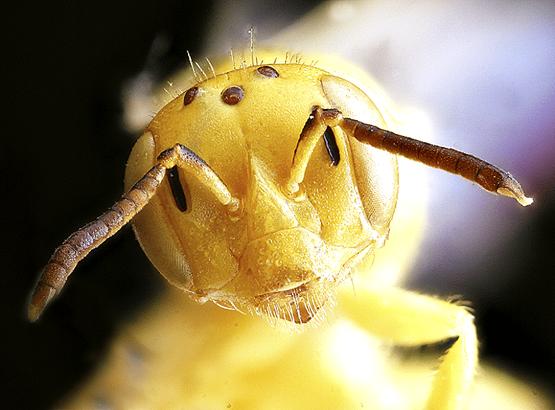 Perdita minima
Perdita minima
The three dots on the head are ‘eyes’
(ourbreathingplanet.com)
 A bee has three parts to its body
A bee has three parts to its body
Look how intricate its feet are
 The inside of a hive is full of activity
The inside of a hive is full of activity
 A Himalayan honey bee nest
A Himalayan honey bee nest
 A carpenter bee
A carpenter bee
(bingapis.com)
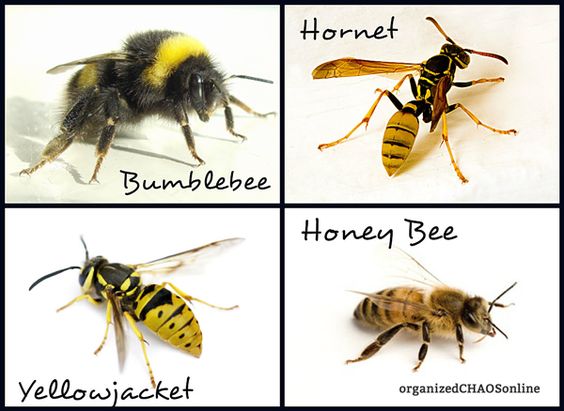
 Heather flowers
Heather flowers

Heather moorland


 THE SALTY SAM NEWS DESK
THE SALTY SAM NEWS DESK

So after setting up a chicken coop and a dovecote, Auntie Alice felt quite pleased with herself.
The next thing for her to do was go to her first bee keeping class.
Classes for people who want to keep bees are set up by local bee keeping associations.
There is so much to learn when you want to start keeping bees.
Actually, looking into a bee hive helps you to understand a lot about the life of bees.
Looking after sheep and goats and bees is called ‘animal husbandry’.
This means you are responsible for the health and well-being of the animals in your care.
The chickens and doves have to be looked after every day.
But the bees in a hive have to be checked on regularly too; maybe every week in the summer and every two to four weeks in the winter.
If there has been a storm or heavy snow, you might want to give your hives some extra checks to make sure there is no damage or the entrance way is blocked up with snow – the bees need air coming in to breathe!
Sometimes the bees have to be given extra food – especially in the winter.
They are given cake icing! This cake icing does not freeze in really cold weather so the bees can still eat it. It is tucked into the top of their hive so they can go up into their attic get some food when they get hungry.
It is a bit like popping out for a takeaway on a cold winter’s evening when you find there is nothing left in the fridge! ![]()
The first thing Auntie Alice had to do before she went to classes was to buy a bee-keeper’s suit.
This is a thick suit with a helmet. The helmet has a net front to it so that the person wearing it can see what they are doing. The suit is often white because pale colours aren’t attacked by bees as much as dark ones.
You can wear the suit with your wellingtons.
The whole of your body needs to be covered so that the bees can’t get to your skin.
They especially like attacking ankles. You need to cover your ankles.
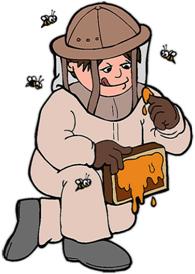
Some of Auntie Alice’s lessons will be in a classroom. Some of them will be in the field – literally in a field! The bee hives are in a field.
A bee keeper has to check that their bees are healthy. If the bees have a really bad illness the bee keeper has to tell a government department.
It is a serious business looking after bees.
Sometimes ill bees can be given medicine.
If it looks like a colony is going to swarm, a bee keeper should be able to recognize the signs.
New queens will be produced to replace the old one. The old queen will fly off to find a new home and if the bee keeper is clever, he or she will be able to intercept the swarm and put it in a new hive that they have prepared earlier and get a free colony of bees.
What is more, they will be familiar with the temperament of the bees because they will have already worked with them.
Auntie Alice started making notes in a notebook from books she bought online.
She will take her notebook to class to make more notes when she learns more things.
She already knows a lot about bee keeping from reading those books.
She wants to be teacher’s pet. ![]()


*********************
TO ADVERTISE ON THIS BLOG
PLEASE CONTACT:
christina.sinclair.ads@aol.co.uk
*********************


Quick Quiz
What words can you pair with these?
- a _ of honey
- a _ of bananas
- a _ of milk
- a _ of toothpaste
- a _ of baked beans
- a _ of batteries
- a _ of marmalade
- a _ of shampoo
- a _ of sweets
- a _ of soup




lt’s the Weekend!
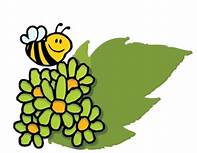
HOW TO MAKE A SPRlNG WATER NYMPH
This little nymph is dressed in blossom colours.
She is wearing a tulip shaped skirt and has a decoration in her hair.
This is the second season fairy in the series this year.
This doll is easy for little fingers to dress but will need experienced knitter’s fingers to make.
BODY (KNIT ONE)
Using 4mm knitting needles and pink dk yarn cast on 17 stitches
Knit 24 rows of stocking stitch
Don’t cast off
Cut off the yarn leaving a length of about 20cm and thread this through the stitches on your needle and pull the knitting needle away
ARMS (KNIT TWO)
Using 4mm knitting needles and pink dk yarn cast on 6 stitches
Knit 8 rows of stocking stitch
Don’t cast off
Cut off the yarn leaving a length of about 10cm and thread this through the stitches on your needle and pull the knitting needle away
LEGS (KNIT TWO)
Using 4mm knitting needles and pink dk yarn cast on 8 stitches
Knit 14 rows of stocking stitch
Don’t cast off
Cut off the yarn leaving a length of about 10cm and thread this through the stitches on your needle and pull the knitting needle away
TO MAKE UP
- Sew up the back seam of the body and head right sides together using over-sew stitching
- Turn the body and head the right way out
- Pull the top of the head shut then stuff the head and body (you may need to put a couple of extra stitches in the top of the head in pink yarn to close up the little hole)
- Sew along the inner leg seams using over-sew stitching right sides together and turn the legs the right way out
- Tightly bind the ankles twice around with pink yarn
- Stuff the legs
- Sew across the top of the legs and the bottom of the body from behind (lay the legs across the stomach as you work) to attach the legs
- Sew a strand of pink yarn into the back of the neck and wrap it around the neck a couple of times, pull tight and secure the yarn into the centre back of the neck
- Embroider a face onto the front of the head using one strand of black yarn (you can pull double knitting yarn apart to get thinner strands)
- Sew along the under arm seams using over-sew stitching right sides together and turn the arms the right way out
- Tightly bind the wrists twice around with pink yarn
- Stuff the arms with the ends of the yarn left over from the knitting and a little stuffing as well
- Sew the arms securely to the sides of the body so that they point forward
- Wind some white yarn around the length of a pack of cards 10 times and sew the front of the loops to the top of the head so that the long hair flows down the back of the neck
- Wind some white yarn around the length of a pack of cards 30 times and sew the centre of the loops to the top of the head so that the long hair flows down each side of the head – your sewing should look like a centre parting
- Slightly trim the ends of the hair if necessary
Now you are ready to dress the doll…

DRESS (KNIT TWO)
Using 4mm knitting needles and white sparkly yarn cast on 11 stitches
Knit 50 rows of garter stitch
Cast off
TULIP SKIRT (KNIT ONE)
Using 4mm knitting needles and mauve sparkly yarn cast on 46 stitches
Knit 6 rows of garter stitch
Knit 18 rows of stocking stitch
Don’t cast off
Cut off the yarn leaving a length of about 20-30cm and thread this through the stitches on your needle and pull the knitting needle away
TULIP SKIRT BORDERS (KNIT TWO)
Using 4mm knitting needles and mauve sparkly yarn cast on 3 stitches
Knit 32 rows of garter stitch
Don’t cast off
Cut off the yarn leaving a length of about 10cm and thread this through the stitches on your needle and pull the knitting needle away
TO MAKE UP
Sew up shoulder seams and side seams of dress with right sides together using over-sew stitching (make sure the head and arms of the doll will fit through the gaps you have left)
Pull the top of the skirt in to fit the doll and secure the ends of the yarn which is threaded through the top stitch
Sew the front borders to the skirt – pull in the tops of these too and secure the ends of the yarn which is threaded through the top stitches
Crochet 25 chains into two lengths of yellow yarn
Attach these to the front top corners of the shirt and tie into a bow at the back of the skirt
Crochet 20 chains into a length of white yarn and attach a yellow sparkly bobble to the side of the hair band
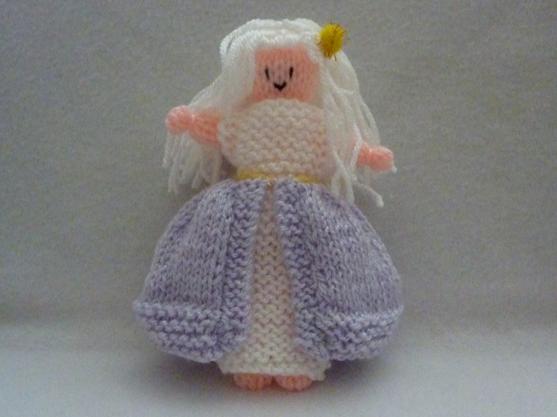
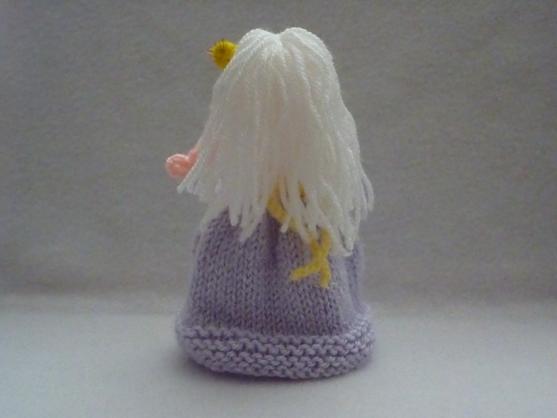
Please note that the material on this blog is for personal use and for use in classrooms only.
It is a copyright infringement and, therefore, illegal under international law to sell items made with these patterns.
Use of the toys and projects is at your own risk.
©Christina Sinclair Designs 2015


Quick Quiz Answers
- a pot of honey
- a hand of bananas (or bunch)
- a carton of milk
- a tube of toothpaste
- a tin of baked beans – or can
- a pack of batteries
- a jar of marmalade
- a bottle of shampoo
- a bag of sweets
- a can of soup – or tin



